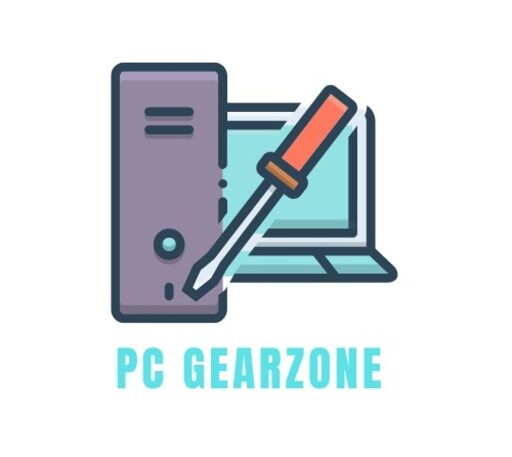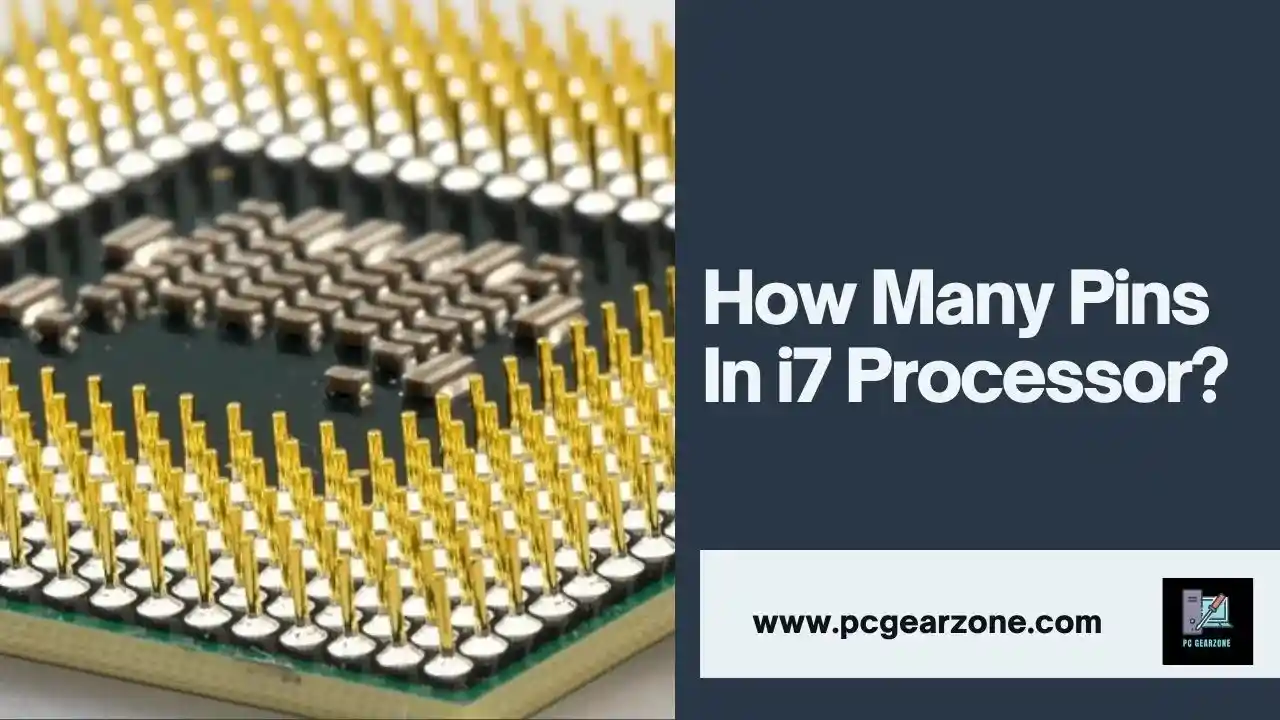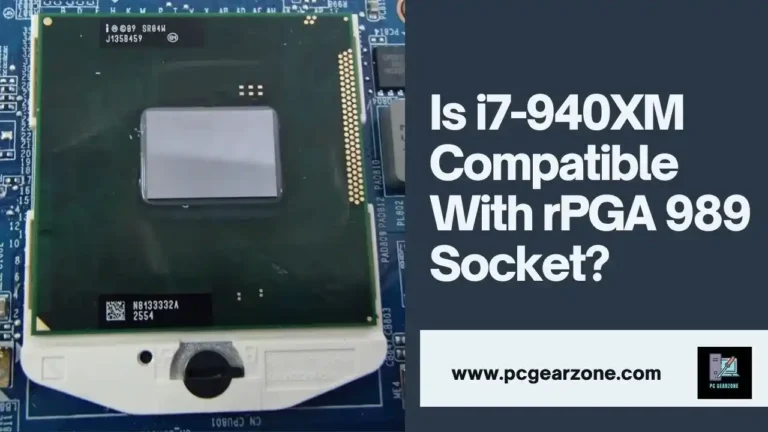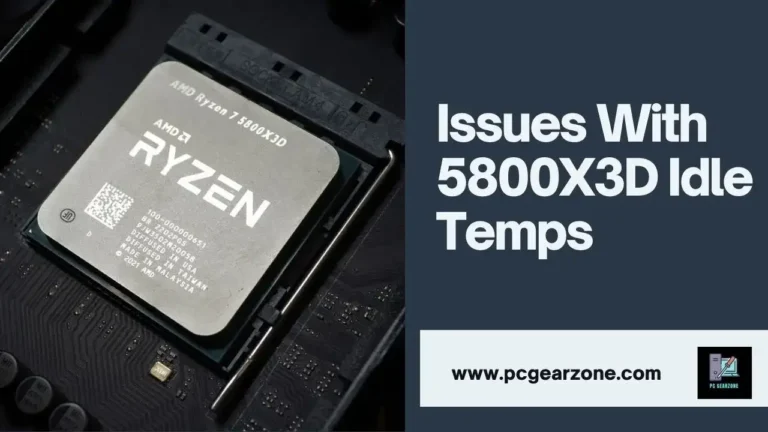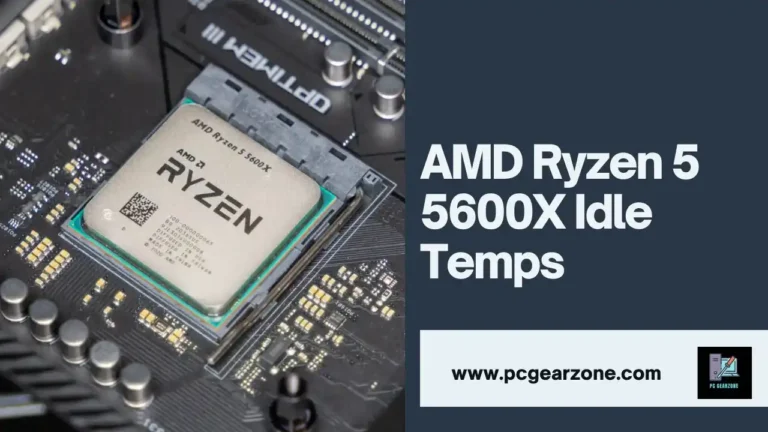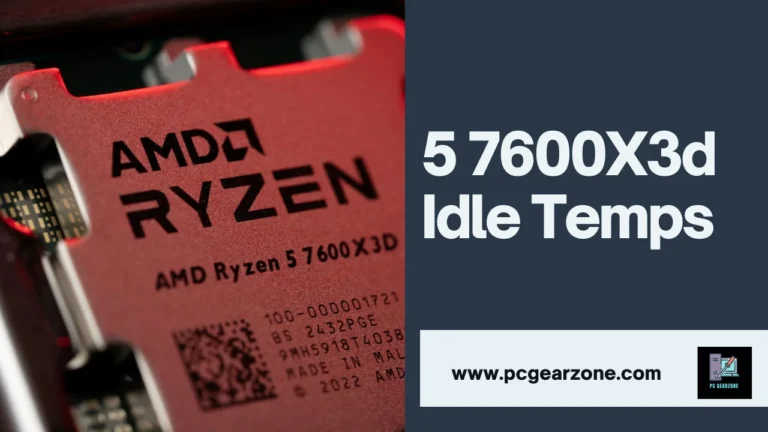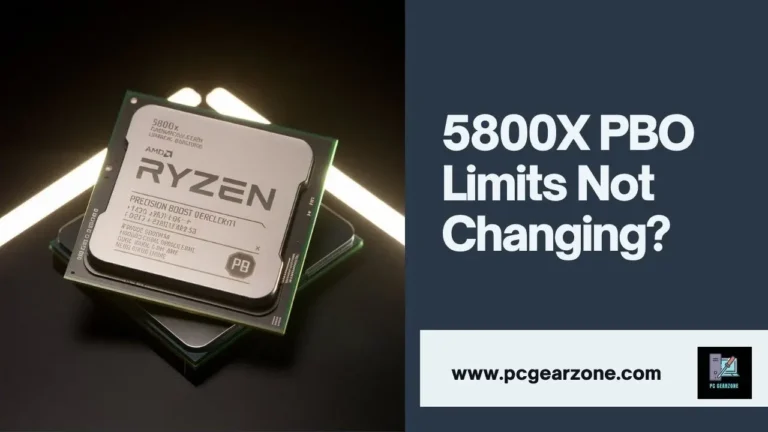How Many Pins In I7 Processor?-Ultimate Guide
Reviewed by: Amir Dylan
Fact Checked by: Tom David
Last Updated on: 13 November 2024
How Many Pins In I7 Processor? This is a question that challenges both new and experienced PC builders and it has been asked severally. It is very important to know the arrangement of the pins of an Intel i7 processor especially if you are putting up a new computer set or if you are just replacing some of the parts of your computer.
Not only does the number of pins determine how the CPU is connected to the motherboard but it is also an important factor in the performance and compatibility of the system. If not well done, this can lead to various problems such as instability on the system, damages on the motherboard or even a non working PC.
In the article below, I will give you a straightforward answer to the question, explain why the pin count is important and the differences in the number of pins in the Intel i7 models. Furthermore, I will present ideas and opinions of specialists, describe some myths, and explain what steps you should pay special attention to when selecting the components for your rig.
Short Answer: How Many Pins In I7 Processor?
The Intel i7 processor for instance does not possess any pins. However, Intel i7 processors incorporate LGA socket design and this implies that the pins are fixed on the socket of the motherboards and not on the processor.
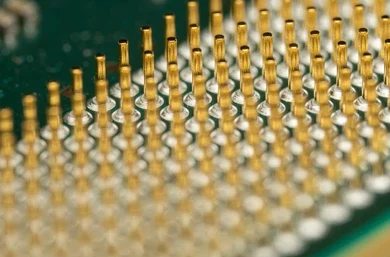
The number of contacts or ‘pads’ on the processor that corresponds to the positions of the pins of the motherboard depends on the generation of the processor and the type of socket.
For example:
- Intel i7-9700K (9th Gen) has LGA 1151 socket and it has 1151 pins on the motherboard for connection.
- Intel i7-10700K and i7-11700K both are compatible with the LGA 1200 socket which has 1200 pins on the motherboard.
- Intel i7-12700K (12th Gen) comes with the new LGA 1700 socket which has 1,700 pins on the motherboard.
The fact that in LGA design the pins are on the motherboard not on the CPU is the primary reason Intel uses this design and that is to avoid breaking the pins on the processor during handling or while fixing the CPU on the motherboard.
This design also enables a higher pin count, which in turn supports more power delivery, faster data transfer rates and improved signal integrity which are crucial for the complex functionality and performance of the current Intel i7 processors.
Thus, although the Intel i7 processor does not have pins, the number of pins of the corresponding socket on the motherboard varies from 1,151 to 1,700 depending on the specific model of the i7 and its generation.
Table of Contents
Do Modern Intel Core i7 Processors Have Pins?
No, today’s Intel Core i7 processors do not have pins on the CPU itself but comes with a LGA package that requires an accompanying socket. They rather employ a Land Grid Array (LGA) socket form. In this design the contact points are flat pads on the base of the processor and the pins that make the electrical connection are on the socket of the motherboard.

This is quite different from the Pin Grid Array (PGA) design that is still in use by some other processors manufacturers such as AMD and where the pins are on the processor.
The newest Intel i7 chips include the i7-12700K (12th Gen) and i7-13700K (13th Gen) and these chips use LGA 1700, which is the number of pins in the motherboard socket. The LGA design is preferred by Intel for several reasons:
- Durability and Reliability: For instance, while placing the pins on the motherboard instead of on the processor, Intel reduces the likelihood of bending or even breaking the pins while trying to fit them into the processor. This is especially so since processors such as the i7-13700K, that is available at a price of approximately $400 USD, are costly and ought to be treated as such.
- Higher Pin Density: The LGA design provides the opportunity to increase the number of pins, and this is necessary for the presence of such elements as PCIe 5. 0, DDR5 memory, and multiple M. 2 NVMe SSDs as shown below; For instance, the LGA 1700 socket has 1,700 holes for power delivery and data transfer as compared to the LGA 1200 socket that has only 1,200 holes.
- Improved Electrical Performance: This is because with more pins used in the LGA socket design, the chances of getting more electrical connections are high and this is very important in reducing signal interferences. This is especially true for high-frequency activity of modern processors that have a frequency above 5 GHz in turbo mode, for example, Intel i7-13700K with a turbo frequency of up to 5. 4 GHz.
You might be looking for an answer to this question How Many Generations of I7 Are There?
check out the detailed explanation on our community.How to Safely Install an Intel i7 Processor to Avoid Damaging Pins
Video Guide:
Why Don’t Intel i7 Processors Have Pins Anymore?
The pins themselves are not present on the Intel i7 processors due to a design change to the Land Grid Array (LGA) socket format which was adopted from the Intel Core 2 Duo series and continues with all modern Intel Core series processors including the i7. The decision to go from a PGA to an LGA design was based on several key parameters that were important in terms of reliability, performance and manufacturability.
Increased Durability and Reduced Risk of Damage: Instead of having pins on the CPU side Intel relocated the pins to the motherboard side and this greatly minimized on the possibility of the pins being bent. Consumer<|reserved_special_token_252|> CPUs such as the Intel Core i7-12700K (12 th Gen) & i7-13700K (13 th Gen) are at times handled by the consumers during installation or upgrade.
Since the pins are now on the motherboard’s socket, which is a fixed device which is not often removed, the problem of bending or breaking pins, as is the case with older PGA designs, is mitigated. This change also protects costly parts; for example, bending a pin on a socket of a motherboard may cost approximately $200 USD for replacement while damaging a pin on a PGA processor for a $400 USD CPU will render the CPU useless.
- Higher Pin Density for Improved Performance: The LGA design makes it possible to have much higher pin density as compared to the PGA. For instance, the LGA 1700 socket that is integrated in the current Intel i7 processors has 1700 pins while the PGA sockets such as the Socket 478 that is used in earlier Intel processors has only 938 pins.
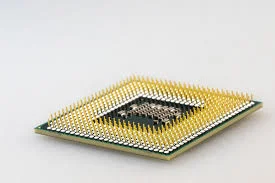
This has resulted in more pin count to facilitate more data and power transmission necessary for supporting modern technologies like the PCIe 5. 0, DDR5 RAM, and advanced power delivery systems which are essential to ensure that the performance of the system remain stable in the higher end usage and gaming.
- Enhanced Electrical Performance and Stability: More pins and a more secure way of mounting means the LGA socket design enhances the electrical connection between the CPU and the motherboard. This in turn reduces the resistance and electromagnetic interference (EMI) thus improving the stability and performance of the entire system.
Current Intel i7 CPUs such as the Intel i7-13700K comes with a base speed of 3. 4 GHz and a maximum turbo frequency of 5. 4 GHz and hence need stable and high-quality electrical connections to perform well at different levels of loads.
- Cost-Effective Manufacturing and Easier Upgradability: LGA sockets are beneficial to the manufacturing of motherboards because the expensive and sensitive pin array is incorporated into the motherboard instead of the processor. The use of packages in this manner simplifies the packaging of the CPU.
In addition, it makes it possible for Intel to have standardized socket types across different generations of CPUs, thus increasing upgradability. For example, motherboards with LGA 1200 socket can accommodate both 10th Generation (Comet Lake) and 11th Generation (Rocket Lake) Intel processors to allow consumers to upgrade without having to replace the entire system.
You might be looking for an answer to this question How Many Pins Does a CPU Have?
check out the detailed explanation on our community.How Many Pins Does an Intel i7 Processor Have?
Intel i7 processors have different sockets for different generations of the processors. The socket type is rather important as it determines the physical and electrical connection of the CPU to the motherboard.
Every socket type is intended for some generations of the processors, thus providing compatibility with new features and options. Below is a detailed overview of the socket types used for Intel i7 processors across various generations:
- LGA 1156 (Socket H): Applied to the initial members of the Intel Core i7 line, which came out in 2009 (e. g. , i7-860, i7-870). The LGA 1156 socket is an arrangement of 1,156 pins on the circuit board. This socket is only compatible with the Intel Core i7 series and mid range Intel Core i5 and Intel Core i3 series processors for desktop use.
- LGA 1366 (Socket B): This socket was released with the top-shelf first generation of the Intel Core i7 processors such as i7-920, i7-960 among others around 2008. The LGA 1366 socket has 1,366 pins on the motherboard and was developed for high performance desktops and entry level server applications. It featured triple-channel DDR3 memory and Intel’s Quick Path Interconnect (QPI) for improved data transfer rate.
- LGA 2011 (Socket R): This socket was launched in 2011 and it was used in the Intel Core i7 processors in Sandy Bridge-E and Ivy Bridge-E series processors (e. g. , i7-3930K, i7-4960X). The LGA 2011 socket has 2011 pin and supports Quad channel DDR3 and DDR4 which makes it suitable for high end computing and professional workstation.
- LGA 1150 (Socket H3): 1,150 pins. Supported the 4th and 5th generation i7 processors such as the i7-4770K and i7-4790K.
- LGA 1151 (Socket H4): This socket was utilized by the 6-th, 7th, 8th, and 9th generation Intel Core i7 processors, for example, i7-6700K, i7-8700K, i7-9700K. Introduced in 2015, the LGA 1151 socket comes in two versions: The desktop versions are one for Skylake and Kaby Lake processors with 1,151 pins and another for Coffee Lake processors with 1,151 pins but is not compatible with the previous version.
- LGA 1200 (Socket H5): With face-to-face mounting, LGA 1200 socket was launched in 2020 and it has 1200 pins; it supports the 10th and 11th generation Intel Core i7 processors such as i7-10700K and i7-11700K. This socket type can accommodate new features such as the PCIe 4. 0 and increased efficiency in delivering power to the CPU hence enhanced performance.
- LGA 1700 (Socket V0): The last socket type is the socket used for the 12th and 13th generations of the Intel Core i7 processors, including i7-12700K and i7-13700K, etc. The LGA 1700 socket has 1,700 pins which are a vast improvement from the previous version. This socket is intended for new Intel hybrid architecture with a combination of performance and efficiency cores, PCIe 5. 0, and DDR5 memory, which will provide the best performance today and prepare for the next generation of technologies.
Table: Differences Between LGA and PGA CPU Sockets
| Feature | LGA (Land Grid Array) | PGA (Pin Grid Array) |
| Pin Location | Pins are located on the motherboard socket rather than the CPU. | Pins are located on the bottom of the CPU itself, and the socket on the motherboard has holes for the pins. |
| Examples | Used in modern Intel processors, such as the Intel Core i7-12700K (12th Gen) with LGA 1700 socket (1,700 pins). | Commonly used in AMD processors, such as the AMD Ryzen 9 5950X with AM4 socket (1,331 pins). |
| Durability | More durable during installation and removal; less risk of damaging pins because they are on the motherboard, which is typically stationary. | Higher risk of bent or broken pins since the pins are on the CPU, which is handled more often. |
| Ease of Installation | Easier to install CPUs as users only need to align the CPU with the socket pads; no pins to bend during placement. | Can be more challenging; users must carefully align the CPU pins with the socket holes, risking damage if misaligned. |
| Repairability | Damaged pins on the motherboard socket are often harder and more expensive to repair; motherboard replacement may be required. | Damaged pins on the CPU can sometimes be straightened or repaired; if not, CPU replacement is necessary, which can be costly. |
| Electrical Contact | Provides a more secure and stable connection due to the large number of pins (e.g., 1,700 pins for LGA 1700), allowing better signal integrity and power delivery. | Fewer pins in comparison (e.g., 1,331 pins for AM4 socket) can mean less stable electrical connections, especially under high-performance conditions. |
| Pin Density and Performance | Higher pin density supports advanced features and higher power requirements, such as PCIe 5.0 and DDR5 memory, seen in LGA sockets. | Generally, lower pin density compared to LGA sockets; supports current technologies but may require frequent updates for new features. |
| Cooling Solutions | Compatible with a wide range of cooling solutions due to the robust socket design that can accommodate larger and heavier coolers. | Less flexibility in cooling solutions; heavier coolers might need additional support to avoid damage to the pins. |
| Socket Stability | More stable socket connection due to the fixed pin structure on the motherboard; beneficial for heavy workloads and overclocking. | Less stable as the CPU pins must maintain contact with the motherboard socket holes; slight misalignment can affect performance. |
| Cost Considerations | Motherboards with LGA sockets can be more expensive due to the complex socket design and manufacturing process. | CPUs with PGA sockets might be less expensive overall, but the design can limit high-end performance capabilities. |
4 Pin vs. 8 Pin CPU Power Connector for i7 Processors: What You Need to Know
- Power Delivery: The 4 pin connector delivers up to 75 watts, the 8 pin delivers up to 150 watts and it aims at the higher power needs of more sophisticated i7 chips.
- Stability: The 8 pin connector gives better support for the overclocking and is therefore suitable for the higher end i7 processors.
- Connector Configuration: The 8 pin connector is a row of 4 pins followed by another row of 4 pins but it can be split into 2 connectors of 4 pins each.
- Motherboard Compatibility: Most modern boards call for an 8-pin connector for power delivery and stability of the motherboard .
- Thermal Management: The 8-pin connector also ensures that the CPU temperatures and the overall stability of the system are good especially when under pressure.
- Future-Proofing: An 8 pin connector provides compatibility with the future CPUs that may demand more power from the socket.
How Many Pins Are Needed for Various i7 Models (e.g., i7-9700K, i7-14700k)?
| i7 Model | Release Year | Base Power Requirement | Recommended Power Connector | Explanation |
| i7-9700K | 2019 | 95 watts | 8-pin | The i7-9700K, a high-performance processor, benefits from an 8-pin connector for stable operation, especially during overclocking. |
| i7-10700K | 2020 | 125 watts | 8-pin | With a higher base power requirement, the i7-10700K requires an 8-pin connector to ensure sufficient power delivery and system stability. |
| i7-11700K | 2021 | 125 watts | 8-pin | Similar to the i7-10700K, the i7-11700K’s power needs are well-supported by an 8-pin connector, accommodating its performance and overclocking potential. |
| i7-12700K | 2022 | 125 watts | 8-pin | The i7-12700K, part of the 12th generation, also uses an 8-pin connector to manage its high power demands and support advanced performance features. |
| i7-13700K | 2023 | 125 watts | 8-pin | As a 13th-generation model, the i7-13700K benefits from an 8-pin connector for efficient power delivery and optimal performance, especially with its increased core count. |
| i7-14700K | 2024 | 125 watts | 8-pin | The latest i7-14700K, with enhanced performance and efficiency, continues to rely on an 8-pin connector to handle its power requirements effectively. |
How Do the Pins on an Intel i7 Compare to Other Processors Like the i9 or AMD Ryzen?
| Processor | Pin Configuration | Power Delivery | Explanation |
| Intel i7 | 8-pin | Up to 125 watts | Intel i7 processors typically use an 8-pin connector, providing sufficient power for stable operation and overclocking. For example, the i7-13700K and i7-14700K use this configuration. |
| Intel i9 | 8-pin + 4-pin (varies) | Up to 250 watts | Intel i9 processors may use an 8-pin connector plus an additional 4-pin connector for higher power delivery, supporting up to 250 watts. The i9-13900K can utilize this setup to handle extreme performance and overclocking. |
| AMD Ryzen | 8-pin + 4-pin (common) | Up to 200+ watts | Modern high-end AMD Ryzen processors, like the Ryzen 9 7950X, often use an 8-pin connector with an additional 4-pin connector to manage high power requirements, supporting over 200 watts. |
Can You Use an Intel i7 Processor on Any Motherboard?
It is not true that you can use an Intel i7 processor on any motherboard that you want. Compatibility between a processor and a motherboard is defined by a socket type. Every processor generation has its own socket type that is compatible with the generation.
Here are some key points to remember:
- Socket Type: It is a physical design that is used to attach the processor to the motherboard and it is referred to as a socket type. It defines how the two components are going to mesh with one another.
- Processor Generation: Intel Core i7 processors come in different generations and each of these generations requires a different socket type. For instance, the 12th generation employs LGA1700, while the 11th generation employs LGA1200.
- Motherboard Compatibility: It is important that your motherboard has a compatible socket type as the i7 processors that you have in mind. In case the socket types are different, the processor will not fit or work in the system as expected.
Common Socket Types for Intel Core i7 Processors:
- LGA775: This was used in early core i7 processors.
- LGA1156: Core i7 second generation.
- LGA1155: Used for third generation of Core i7 processors.
- LGA2011: Applied to the top of the range Core i7 processors including the Extreme Edition chips.
- LGA1150: Applied to fourth generation of Core i7 processors.
- LGA1151: Suitable for the 6th, 7th and 8th generation Core i7 processors.
- LGA1200: It supports 10th generation of Core i7 processors.
- LGA1700: Intel’s desktop CPU socket designed for 11th, 12th, and 13th generation Core i7 processors.
What Happens If CPU Socket Pins Are Damaged?
Users Experience
1. Damage Assessment
Bent socket pins are usually observed when assembling or disassembling a PC. For example, if an individual tries to remove the protective plastic from a socket with an intent of replacing it, there is high likelihood of damaging the pins. This may result to a situation where the CPU does not power on appropriately.
Example: A user also complained of bending pins while trying to remove the socket protective cover and this led to the system not to boot. The CPU fan would just flicker for a few seconds, and the computer did not even start the power-on self-test (POST).
2. Impact on CPU
Likelihood of Damage: Comparatively, there is low probability of bent socket pins to harm the physical structure of the CPU. The CPU normally stays intact in such circumstances provided that the power was only applied momentarily and no signs of scorched marks or other forms of physical destruction were observed.
If the CPU is exposed to power cycles with damaged pins such as the Intel i5-6600K then there are very slim chances that the CPU will fry. The opinions of professionals are that in the majority of cases, the CPU is preserved even with the damage of the motherboard.
3. Effect on New Motherboard
Risk to New Motherboard: It is highly improbable to have the CPU itself damaging the new board if you try to plug a CPU that has bent socket pins onto it. However, where the bent pins lead to electrical shorting, it becomes possible to develop a new motherboard which may be damaged.
Precaution: One may find it useful to straighten and test all the pins before placing the CPU on a new motherboard to prevent this.
4. Repairing Bent Pins
Method: To fix bent pins, you should use a thin stick such as a toothpick or the tip of a mechanical pencil to align the pins. Kindness should be exercised especially in order not to worsen the situation.
Example: Some of the users have tried the above methods to rectify bent pins and have been able to continue using the same CPU without problems and this is because most of the time CPUs are very tolerant of slightly damaged pins.
5. Other Factors
Physical Strain: Excessive clamping or squeezing of the heatsink onto the CPU may result into physical pressure or ‘bite’ marks on the CPU but this rarely affects the performance of the CPU, only if it is visibly damaged.
System Testing: If after replacement of the pins the CPU does not work, then the defect can be in the motherboard, RAM, or in the settings of the BIOS. It is also important to note that a BIOS update or reconfiguration may fix problems that have nothing to do with the CPU.
How Do the Pins on an Intel i7 Compare to Other Processors Like the i9 or AMD Ryzen?
When comparing the pins on Intel i7 processors with Intel i9 and AMD Ryzen processors, several factors are key:
Socket Type and Pins:
- Intel i7: The Intel i7 uses LGA (Land Grid Array) sockets. For instance, the i7-9700K has the LGA 1151 socket with 1151 pins while the i7-13700K has the LGA 1700 socket with 1700 pins.
- Intel i9: Like the i7, it also uses LGA Sockets such as the i9-13900K that come with the LGA 1700 socket. The pin count is the same as i7 models, but it requires more power and cooling as it is faster than the other models.
- AMD Ryzen: PGA (Pin Grid Array) sockets are used here. The Ryzen 5000 series, the Ryzen 9 5950X is compatible with the AM4 socket with 1331 pins while the Ryzen 7000 series uses the AM5 socket with 1718 pins. Here, the pins are on the CPU and not on the socket as is the case with other types of sockets.
Power Delivery:
- Intel i7: Normally consumes up to 125 watts, this is accompanied by an 8-Pin connector.
- Intel i9: It uses up to 250 watts sometimes it needs both 8-pin and 4-pin connectors for better performance.
- AMD Ryzen: Other high-performance CPUs like the Ryzen 9 7950X need up to 200 watts, here they use 8-pin plus 4-pin connection.
Design and Performance:
- Intel i7: Good for performance as well as power usage, good for gaming and moderate multitasking.
- Intel i9: better performance for more cores and higher clock rates for specific applications.
- AMD Ryzen: Competitive performance, the Ryzen 9 series match or beat Intel i9 in some benchmarks.
Conclusion:
Therefore it is very important to know how many pins there are in an Intel i7 processor so that you are able to install it correctly in your system. The pin configuration varies depending on the generation of the i7 processor and the corresponding socket type: for instance, the LGA 1151 socket that supports the 6th,7th,8th, and 9th generation i7 processor has 1151 pins while the LGA 1700 socket that supports the 12th and 13th generation i7 processors has 1700 pins.
These details enable one to choose the right mother board as well as prevent one from incurring some problems while installing them. It is always important to check on the particular socket and pin of the i7 model you intend to upgrade to avoid any hassle and to have the best performance of the system.
Frequently Asked Questions:
1. What is the pin count for an Intel i7-9700K processor?
The Intel i7-9700K processor uses the LGA 1151 socket, which has 1151 pins. This socket type is compatible with 8th and 9th generation Intel processors.
2. How many pins does the Intel i7-12700K have?
The Intel i7-12700K processor utilizes the LGA 1700 socket, which features 1700 pins. This socket is used for 12th generation Intel processors and provides improved power and data transfer capabilities.
3. Are all Intel i7 processors compatible with the same motherboard?
No, compatibility depends on the processor’s generation and socket type. For instance, an Intel i7-7700K with an LGA 1151 socket is not compatible with a motherboard designed for an Intel i7-13700K, which uses the LGA 1700 socket.
4. How does the number of pins affect processor performance?
The number of pins is related to the processor’s socket and motherboard compatibility rather than performance directly. More pins generally indicate a newer socket type that supports additional features and improved performance capabilities.
5. Can I use a processor with more pins in an older motherboard?
No, processors with different pin counts require specific motherboards that match their socket type. For example, an LGA 1700 processor cannot be installed in an LGA 1151 motherboard due to differences in socket design and pin layout.
6. What should I do if I accidentally damage the pins on my i7 processor?
If the pins on your Intel i7 processor are damaged, it is advisable to replace the processor or motherboard as needed. Damaged pins can cause improper connections and potential system failures. Always handle processors with care to avoid such issues.
7. How do I determine the pin count for a specific Intel i7 model?
To determine the pin count, check the processor’s specifications on the manufacturer’s website or the technical documentation provided with the CPU. The socket type listed in the specifications will indicate the number of pins.
8. Are AMD Ryzen processors compatible with Intel i7 sockets?
No, AMD Ryzen processors use different socket types, such as AM4 or AM5, which are not compatible with Intel i7 sockets. Each processor brand and model requires a motherboard with the appropriate socket type.
9. Does the number of pins affect CPU cooling solutions?
While the number of pins does not directly affect CPU cooling solutions, the socket type and processor model can influence the cooling requirements. Ensure that your cooling solution is compatible with both the socket type and the thermal requirements of your specific Intel i7 processor.
10. Where can I find a list of compatible motherboards for a specific Intel i7 processor?
You can find a list of compatible motherboards on the CPU manufacturer’s website or through the motherboard manufacturer’s product pages. These lists are updated to reflect compatibility with specific Intel i7 models and their corresponding socket types.
11. What is an LGA socket?
An LGA socket is a type of CPU socket that uses contact points (lands) instead of pins. This design helps protect the delicate connections between the CPU and motherboard, reducing the risk of damage.
Articles You Might Be Interested:
Ryzen 9 3900x Game Crashes When Overclocked
Is i7-940XM Compatible With rPGA 989 Socket?
